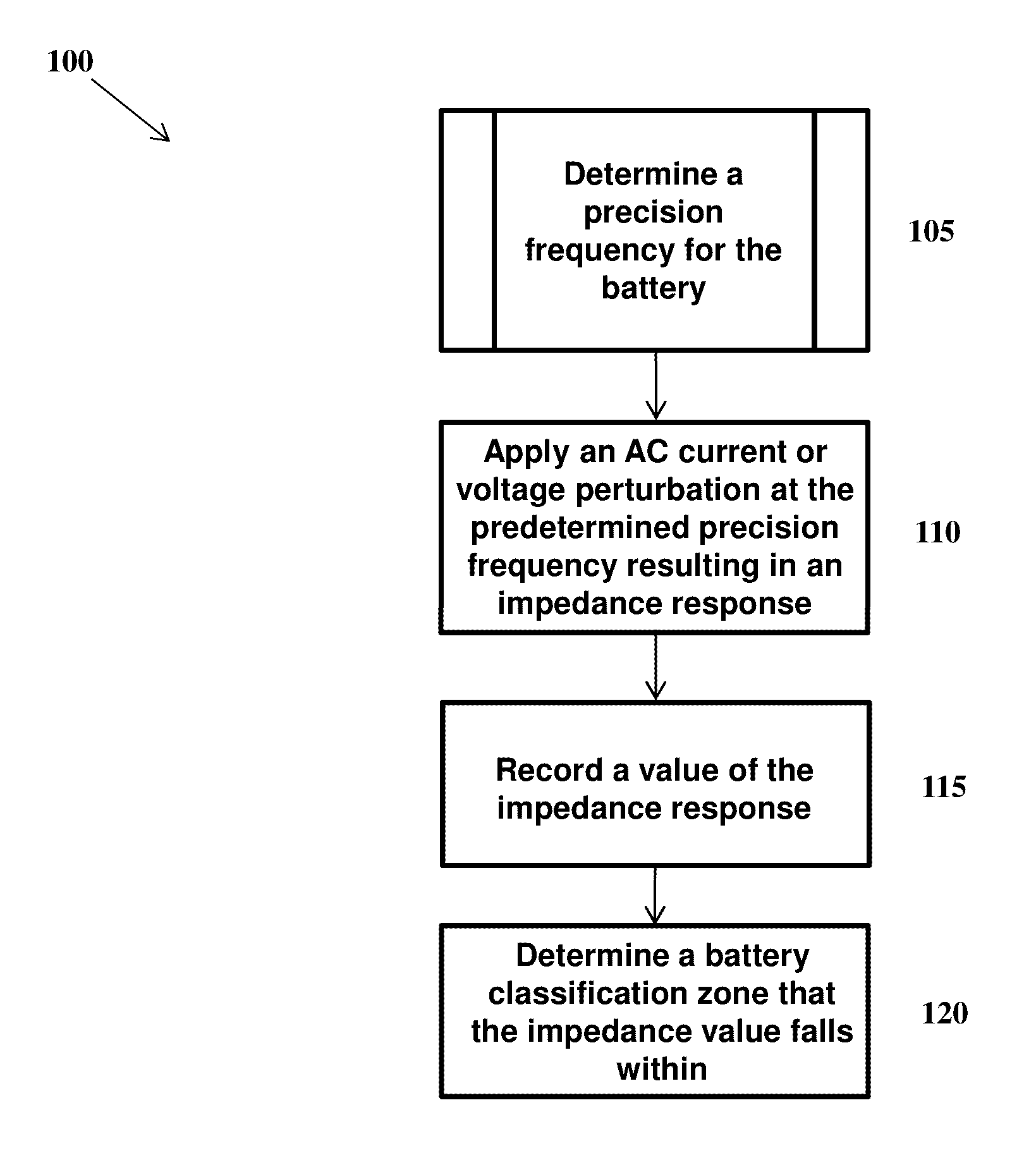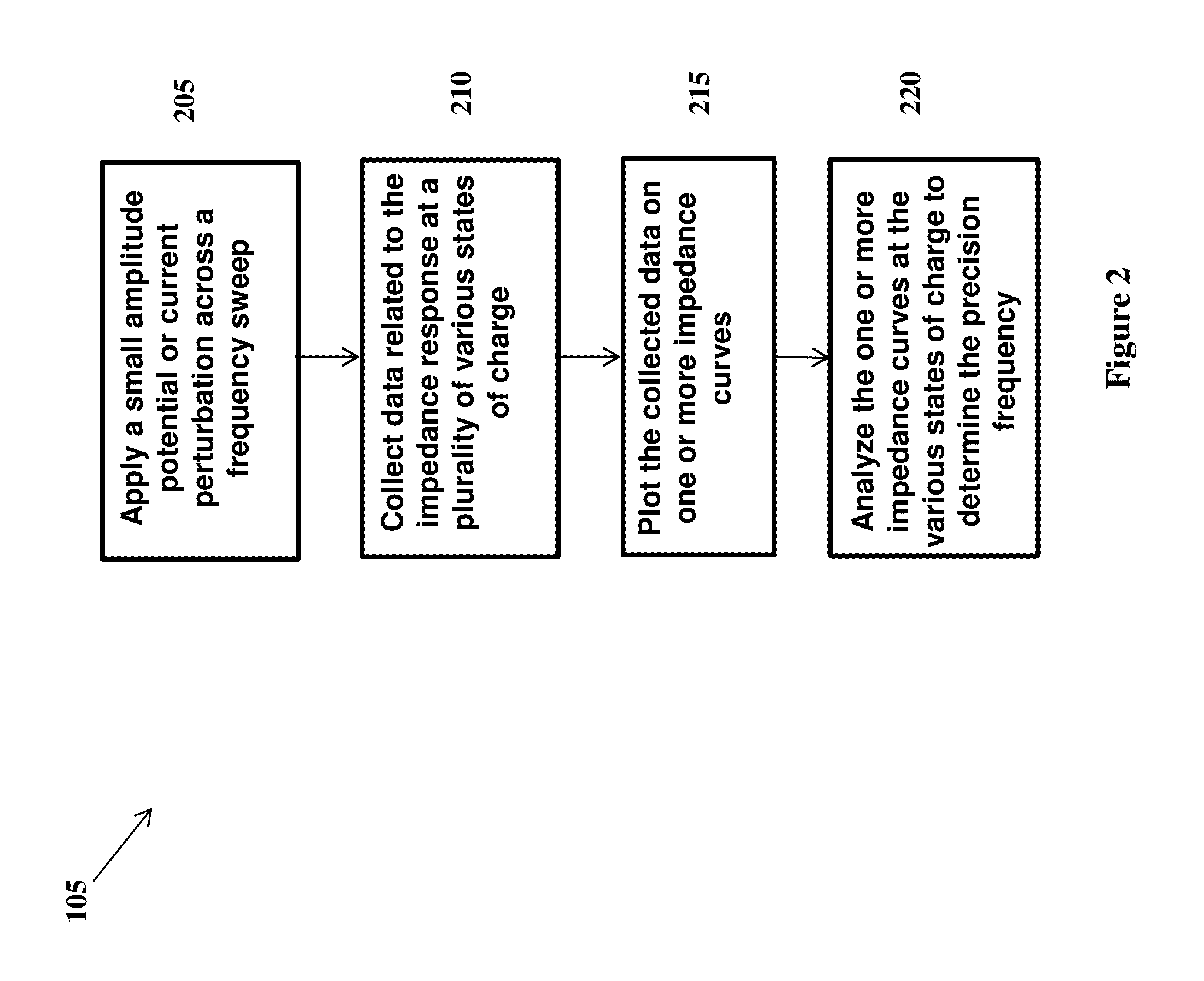Battery health monitoring system and method
a battery health and monitoring system technology, applied in the field of battery health monitoring, can solve the problems of reducing the capacity and cycling performance of the battery, and reducing the performance of the battery
- Summary
- Abstract
- Description
- Claims
- Application Information
AI Technical Summary
Benefits of technology
Problems solved by technology
Method used
Image
Examples
Embodiment Construction
[0017]Referring now to the drawings, in which like numerals represent like elements, aspects of the exemplary embodiments will be described in connection with the drawing set.
[0018]In general, in an exemplary embodiment of the invention an impedance diagnostic and prognostic technique and system that can be utilized that monitors the health of batteries, such as rechargeable lithium-ion batteries. The method can measure and monitor the state of health of batteries regardless of the state of charge; and therefore, can be useful during charging, discharging or during periods of rest (e.g., no current flow). FIG. 1 is flow chart 100 illustrating a battery health diagnostic method in accordance with an exemplary embodiment of the invention. In Step 105, a precision frequency can be determined for the battery. FIG. 2 is flow chart 105 illustrating a method for determining a precision frequency for a battery in accordance with an exemplary embodiment of the invention. In Step 205, a small...
PUM
| Property | Measurement | Unit |
|---|---|---|
| voltage | aaaaa | aaaaa |
| voltage | aaaaa | aaaaa |
| cutoff voltage | aaaaa | aaaaa |
Abstract
Description
Claims
Application Information
 Login to View More
Login to View More - R&D
- Intellectual Property
- Life Sciences
- Materials
- Tech Scout
- Unparalleled Data Quality
- Higher Quality Content
- 60% Fewer Hallucinations
Browse by: Latest US Patents, China's latest patents, Technical Efficacy Thesaurus, Application Domain, Technology Topic, Popular Technical Reports.
© 2025 PatSnap. All rights reserved.Legal|Privacy policy|Modern Slavery Act Transparency Statement|Sitemap|About US| Contact US: help@patsnap.com



